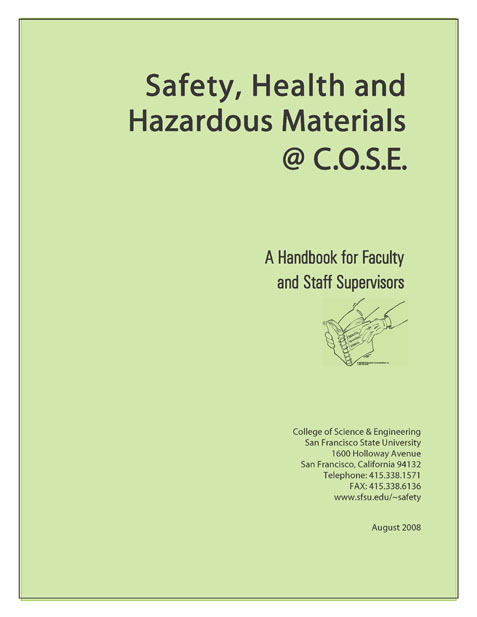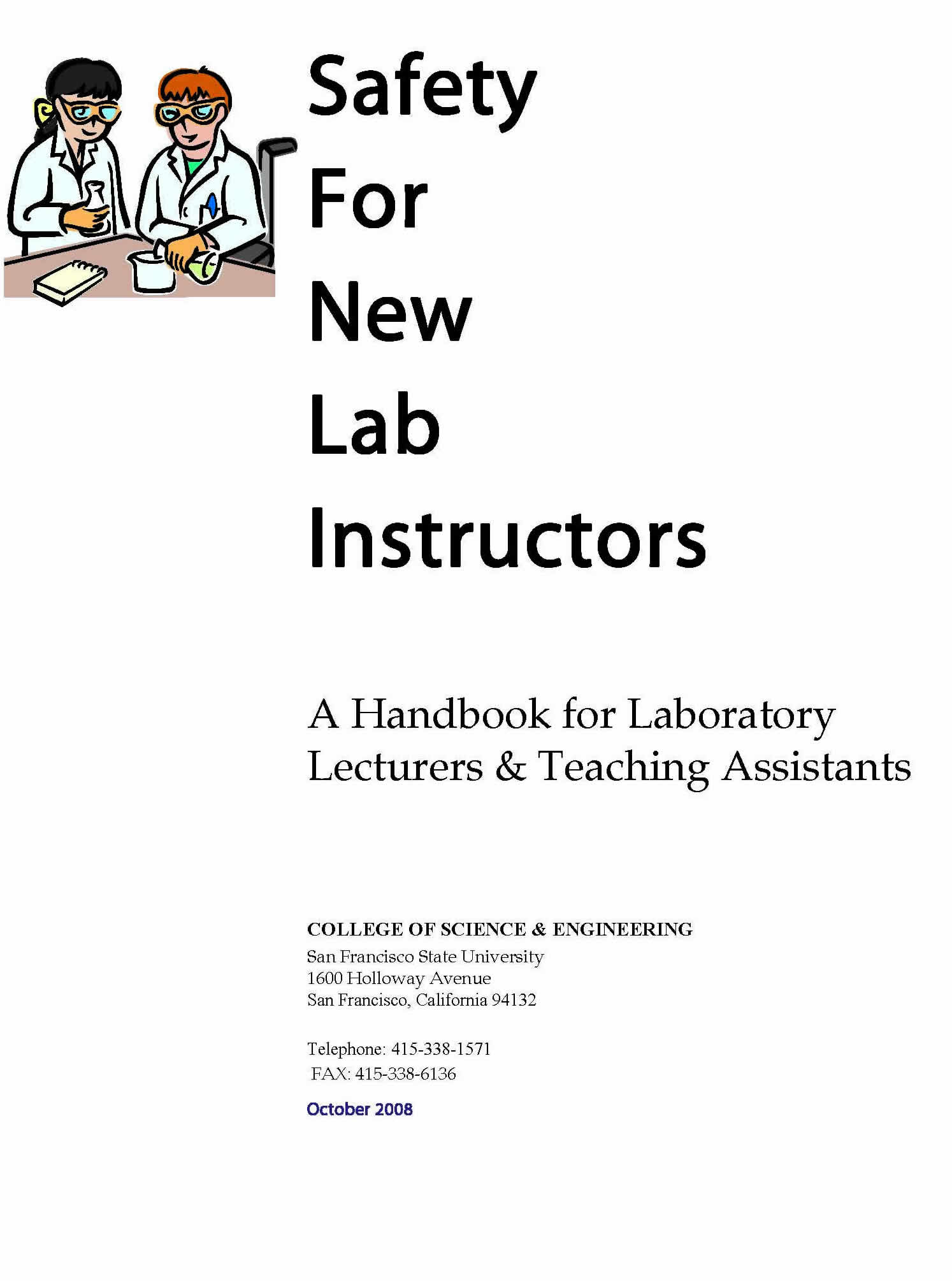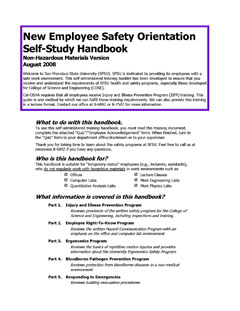NEW RESEARCHER TRAINING
-
The goal of employee training is awareness of both the hazards of their workplace and the precautions necessary to work safely. Lack of adequate training is one of the chief causes of safety compliance problems. Untrained personnel, especially in potentially hazardous areas, are a danger to themselves and to others. Safety training must be documented to count as required training.
- Principal Investigator Responsibility
- Safety Training Handbooks
- Research Assistant Training Certification
- Topics to Cover with New Employees
Principal Investigator or Project Manager Responsibility
Principal Investigators or Lab Managers are required to conduct a safety orientation for new hires within 30 days of their first day of work:
- Require new hires to read this handbook, with work-specific information filled in by you.
- Hold a training session in which job-specific tasks and required precautions are covered.
- Submit a completed training completion form with recall exercise to COSE Health and Safety Staff.
Safety Training Handbooks

This handbook serves as the IIPP for the College of Science & Engineering and is used as the safety training handbook for faculty and staff.
Faculty, staff, and research assistants who work with hazardous materials should use this handbook as a supplement to project-specific training provided by the Principal Investigator.
Recall Exercise and Training Certification
This self-administered training handbook has been developed to ensure that you receive and understand the requirements of SFSU health and safety programs, especially those developed for College of Science and Engineering (COSE).
Cal-OSHA requires that all employees receive Injury and Illness Prevention Program (IIPP) training. This guide is one method by which we can fulfill these training requirements -- for temporary personnel who do not work with hazardous materials (i.e., labs)Non-Hazardous Work: Recall Exercise and Training Certification
-
Topics to cover with new employees
Everyone in a laboratory should know the physical and health hazards associated with chemicals in a particular work area before starting work. Also consider the consequences of losing electrical power or water pressure. What needs to happen to save research, equipment, and protect worker safety?
Educating inexperienced laboratory personnel is an ongoing process. Never-the-less, new hires must receive sufficient basic training for them to begin their work knowledgeably and safely. The laboratory supervisor or principal investigator must cover the material with the level of detail he or she believes is necessary for this to happen.Review the “Safety and Hazardous Materials at C.O.S.E” handbook with your new personnel and cover the relevant topics listed below:
- Location and availability of the Chemical Hygiene Plan and OSHA Lab Standard
- Definition and availability of Permissible Exposure Limits and reference materials
- Signs and symptoms associated with exposures to the chemicals used in your laboratory
- Methods and observations used to detect the presence or release of chemicals in the laboratory
- Physical and health hazards of chemicals you are using
- General and specific laboratory protocols and work practices
- Measures lab workers can take to protect themselves from exposure
- Disposal protocols for hazardous waste



